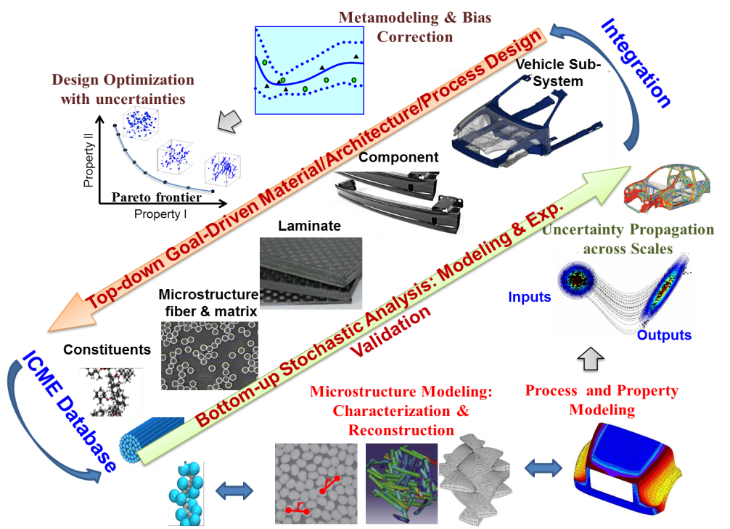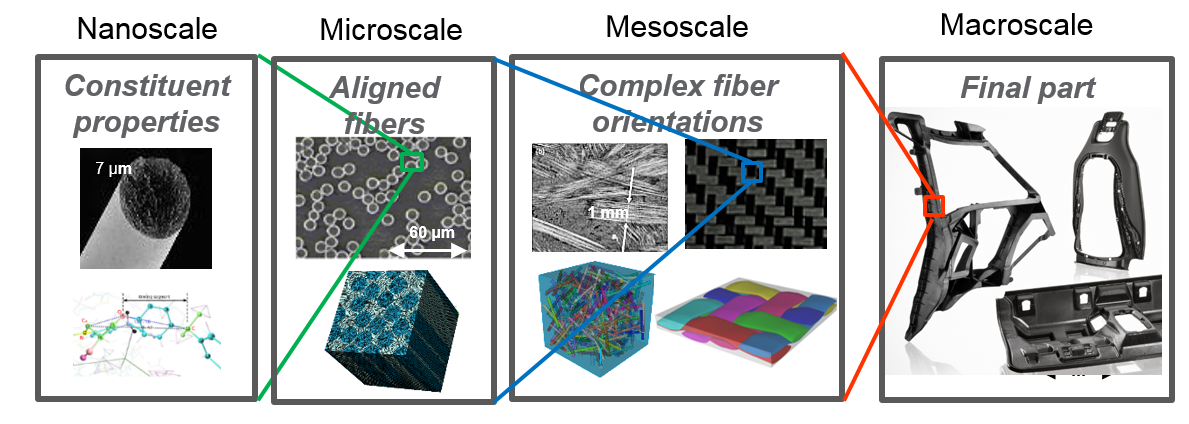Motivation
Fig. 1: ICME framework for CFRP
The main objective of the Integrated Computational Materials Engineering (ICME) project is to develop, integrate and implement simulation tools for Carbon-Fiber Reinforced Polymer (CFRP) composites, which integrates different modeling and simulation tools into one system that links composite material design, processing and design optimization to accelerate the manufacturing of CFRP components (Fig.1).
Description
The main tasks of our group in the ICME project:
1. Processing modeling of woven fabric composites Woven fabric composites usually undergo large in-plane shear deformation in the preforming process. The reorientation and redistribution of yarns after forming would result in a significantly anisotropic material behavior. A non-orthogonal constitutive model to characterize this anisotropic behavior of woven composites would be developed. It would enable us to accurately predict the yarn orientation and defects occurring in the preforming, such as wrinkles (Fig.2).
Fig. 2: Comparison between experiment and simulation with non-orthogonal constitutive model
2. Multi-scale modeling of Cured woven composites The multi-scale model mentioned here has a hierarchical nature, it will be based on the homogenization techniques, starting from the smallest scale to the highest scale. Four distinct scales are defined: nanoscale, microscale, mesoscale, and macroscale (Fig.3). Information at lower scales would be passed into higher scales to investigate the effect of constituent and micro-structure on macroscale parts’ mechanical property and structure performance.
Fig. 3: Schematic of Multi-scale modeling for Cured woven composites



